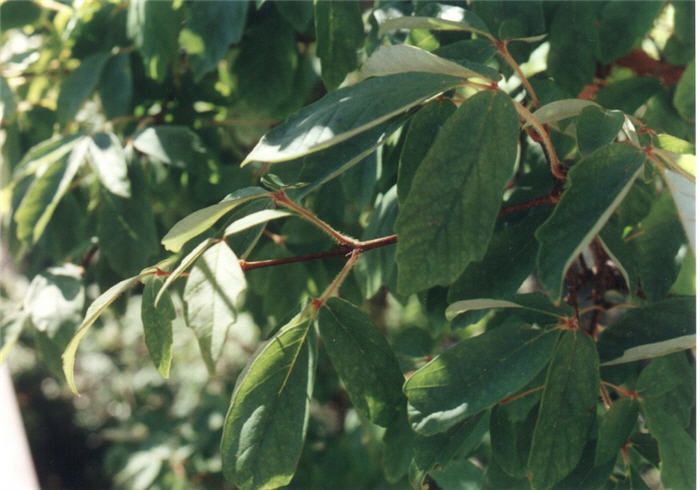| Botanical Name: Acer griseum | |
| Common Name: Paperbark Maple |

-
Anatomy
-
Culture
-
Design
Plant Type
Tree
Height Range
12-25'
Flower Color
n/a
Flower Season
n/a
Leaf Color
Grey Green, Light Green
Bark Color
Brown, Red
Fruit Color
n/a
Fruit Season
n/a
Sun
Full, Half, Shade
Water
Medium
Growth Rate
Slow
Soil Type
Clay, Loam, Rocky
Soil Condition
Average, Rich, Poor, Well-drained
Soil pH
Acid, Neutral
Adverse Factors
n/a
Design Styles
Formal, Woodland
Accenting Features
Fall Color, Multi-trunk Tree, Specimen
Seasonal Interest
Winter, Spring, Summer, Fall
Location Uses
Entry, Shrub Border, Foundation, Patio, Raised Planter
Special Uses
Screen, Small Spaces
Attracts Wildlife
n/a
Information by: Stephanie Duer
Photographer: Engstrom, Connon
Photographer: Engstrom, Connon
-
Description
-
Notes
This maple is known for its cinnamon colored, exfoliating bark and delicate, open habit. A lovely specimen tree with brilliant to rusty-red fall color. Usually multi-stemmed or low-branched single-stem. Slow growing to 25 feet tall and 15 to 20 feet wide. Ideally suited for a smaller garden or for grouping.
Grow in full sun to bright shade in any well-drained soil. Excessive moisture may cause crown rot or the bark to split. Prune selectively to shape and control size (see guides); shearing will cause lots of twiggy growth at the tips and eventually lead to a hard, dense branching (imagine a box with leaves) which in turn encourages pest and disease problems.